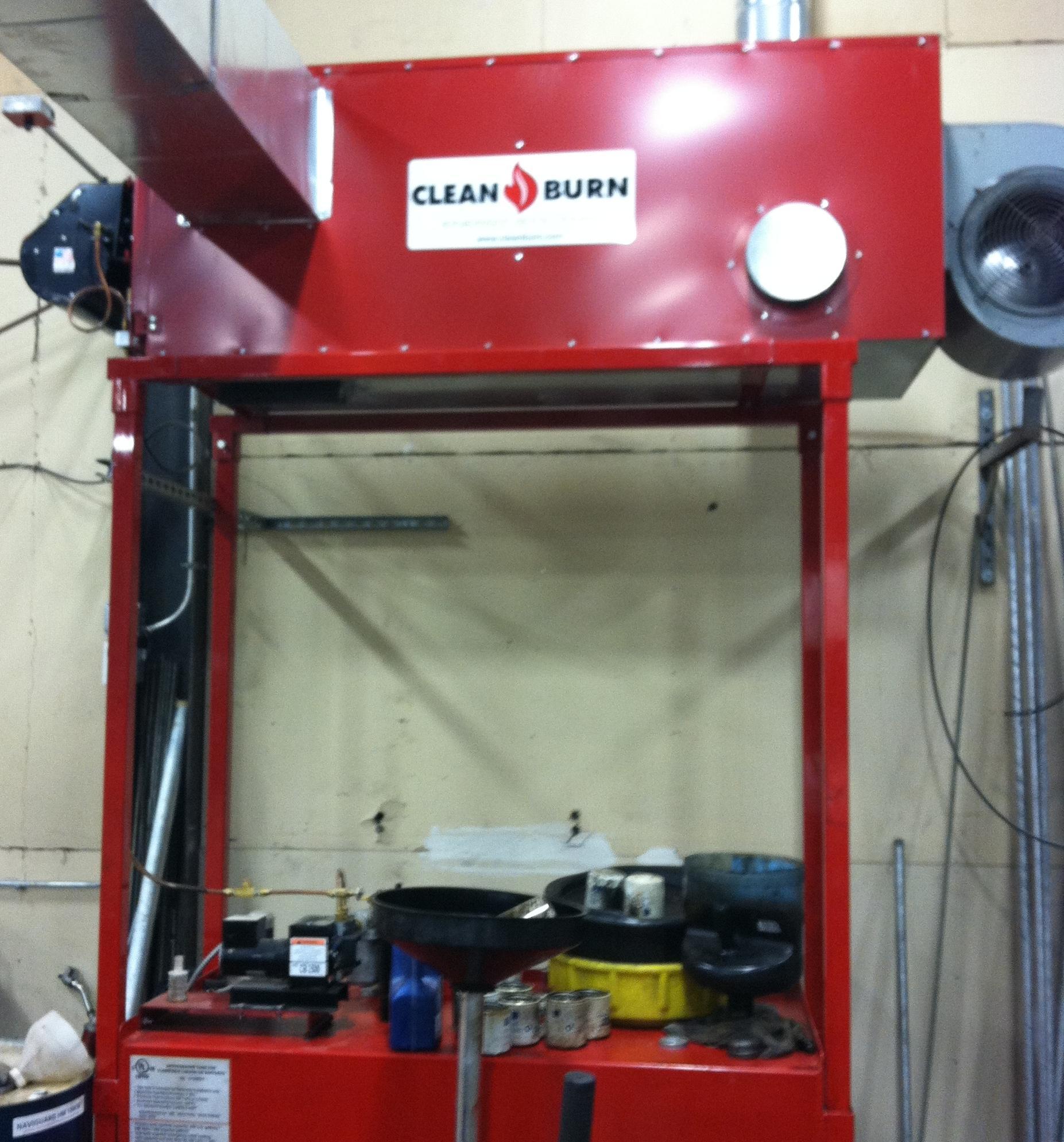Turning Used Motor Oil into Heat with a Used Oil Furnace
February 2014
Wondering what to do with the used oil from your vehicles? Recycling it helps protect the environment and makes business sense, too. One way to recycle it is by burning it as heating fuel in a used-oil furnace.
Recycling Used Oil
First and foremost, DO NOT put used oil in the trash or pour it down the drain. According to the U.S. Environmental Protection Agency (EPA), the used oil from a single oil change can contaminate one million gallons of fresh water.
Instead, used oil can be recycled by being re-refined into lubricant, processed into fuel oil, or used as raw material for the petroleum industry. Used oil, which includes engine oil, transmission fluid, lubricating oil, and others, isn’t worn out – it’s just dirty.
Although re-refining used motor oil is the most environmentally beneficial recycling option, because it can be reused many times, burning the used oil for heat is an option that is both good for the environment and good for the bottom line.
TransAction Corporate Shuttles’ Used Oil Furnace

Burning used engine oil and transmission fluid for auxiliary heating saves operating dollars and is extremely convenient, and TransAction Corporate Shuttles can attest to that. TransAction is a private company located in Woburn, MA that provides shuttle services and community transportation services. It has a fleet of approximately 45 vehicles, ranging from 13-passenger vans to 33-passenger buses. In 2011 management invested in a used oil furnace, which has a 275 gallon tank and takes used motor oil of any weight. The return on investment will end up being about three years.
TransAction installed the furnace in its maintenance garage in part because it didn’t require much duct work. After the oil is extracted from the vehicle, it goes through a screening system the maintenance department staff created, and then goes into the furnace tank.
The most important benefit of the furnace is the complete removal of heating oil costs for the maintenance garage, but a close second is the convenience. The staff no longer has to worry about spilling while putting the used oil back in containers and getting it to a collection center or motor oil retailer. And of course there are the environmental benefits, like energy efficiency, waste reduction, and minimizing the pollution risks.
Regulations and Resources
It is important to note that handling and burning used oil is regulated by the EPA under the Resource Conservation and Recovery Act (RCRA), and more information about the laws and regulations related to used oil can be found here.
However, as stated on EPA’s very informative "Managing Used Oil: Advice for Small Businesses" guidance, “Burners of used oil that meets a certain set of quality standards called the used oil specifications are not regulated under the used oil management standards, as long as the used oil is burned in appropriate boilers, furnaces, or incinerators.”
Before considering purchasing a used oil furnace, a transit manager would need to make sure the agency’s used oil would meet those specifications and that it would be in compliance. He/she would also need to contact state and local governments about relevant programs and regulations, which may be stricter than those at the federal level.
Below are some resources to help transit providers research this recycling option and find out if it’s a good fit for them:
- 40 CFR Part 279 – Standards for the Management of Used Oil, July 1, 2012
- U.S. EPA, “Managing Used Oil: Advice for Small Businesses,” November 1996
- U.S. EPA, "Managing Your Hazardous Waste: A Guide for Small Businesses," December 2001
- U.S. EPA, “RCRA in Focus: Vehicle Maintenance,” June 1999
- Transportation Research Board, “TCRP Synthesis of Transit Practice 9: Waste Control Practices at Bus Maintenance Facilities,” 1995
Examples of state and local programs, regulations, and guidance:
Photo credit: Elizabeth Taylor, National RTAP